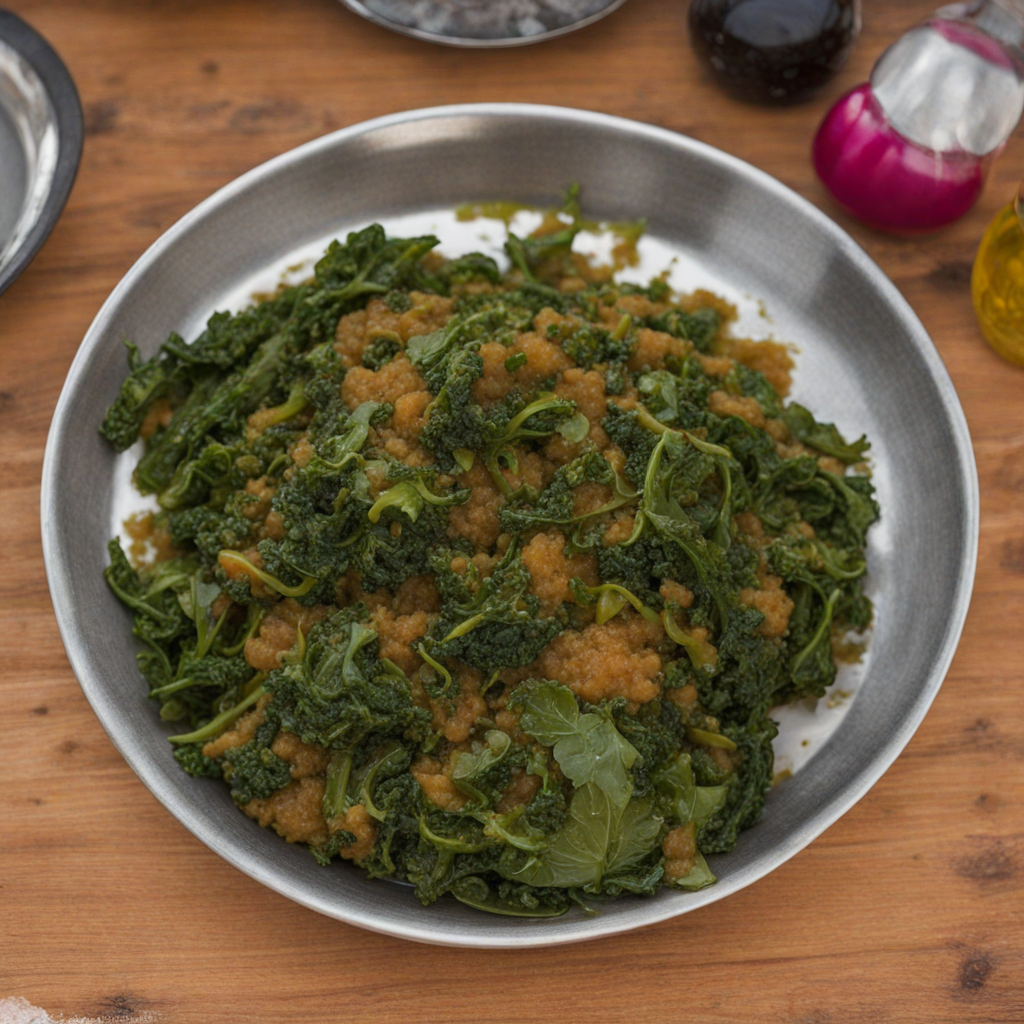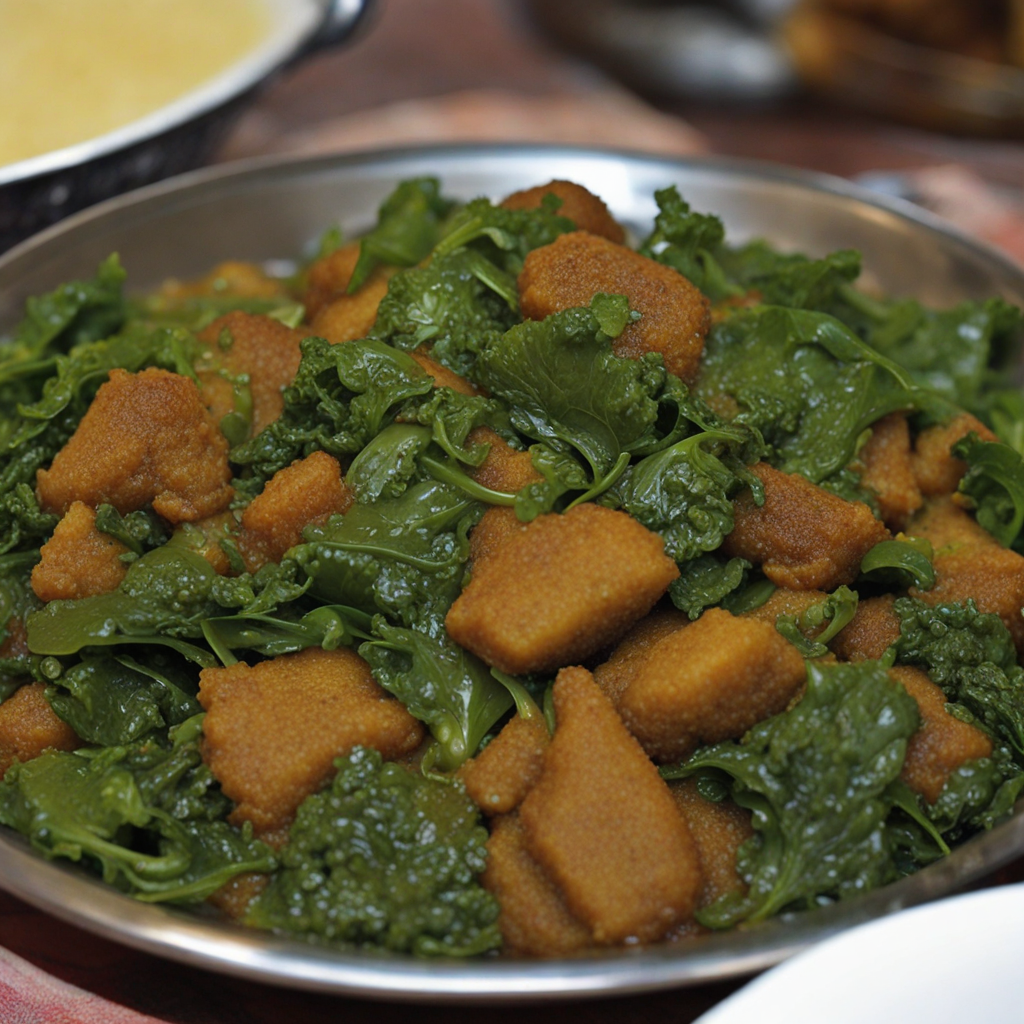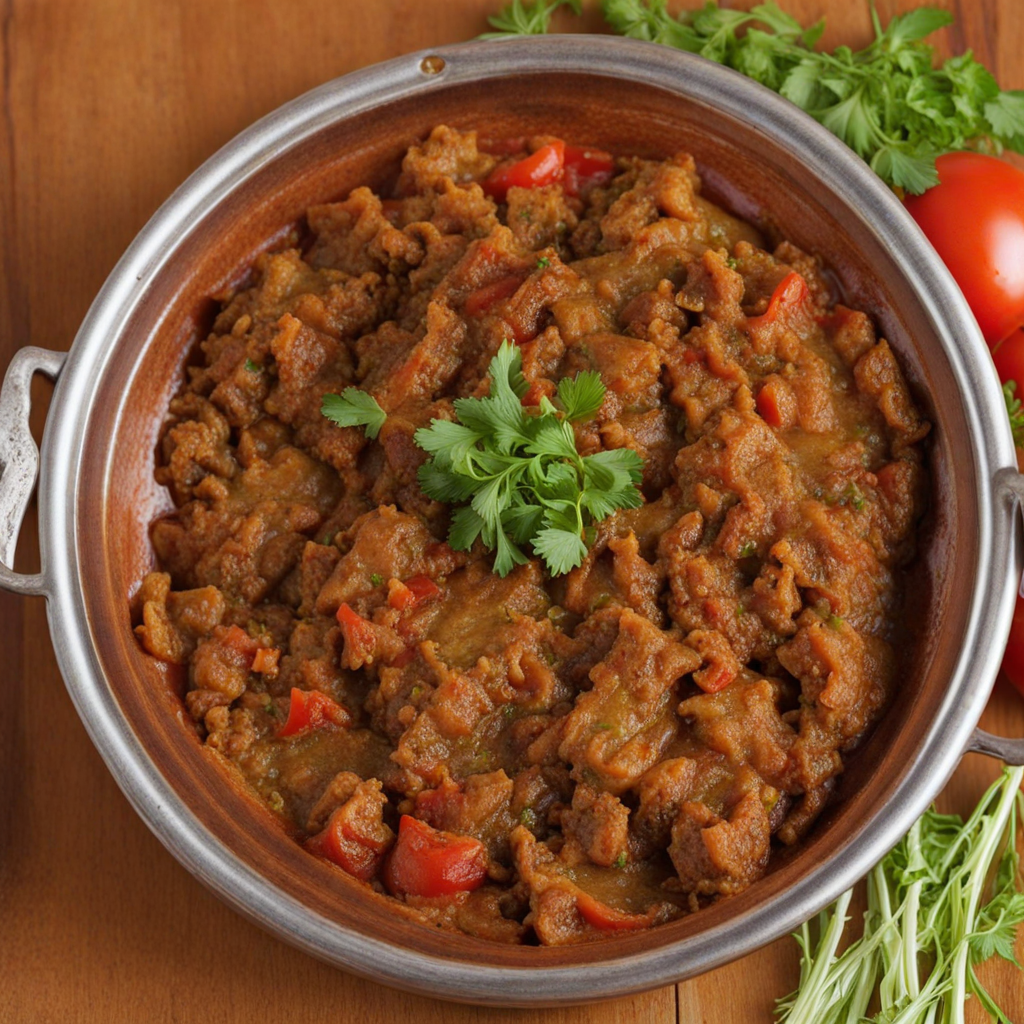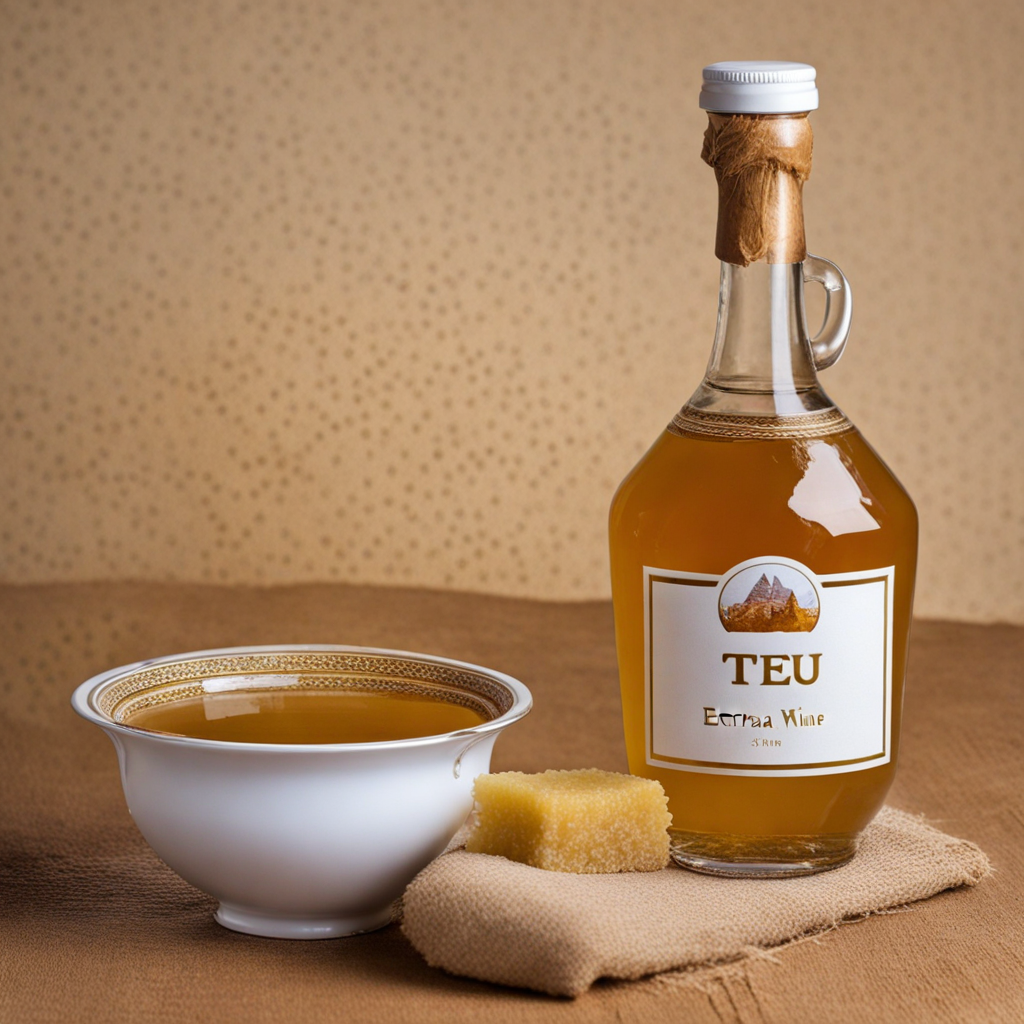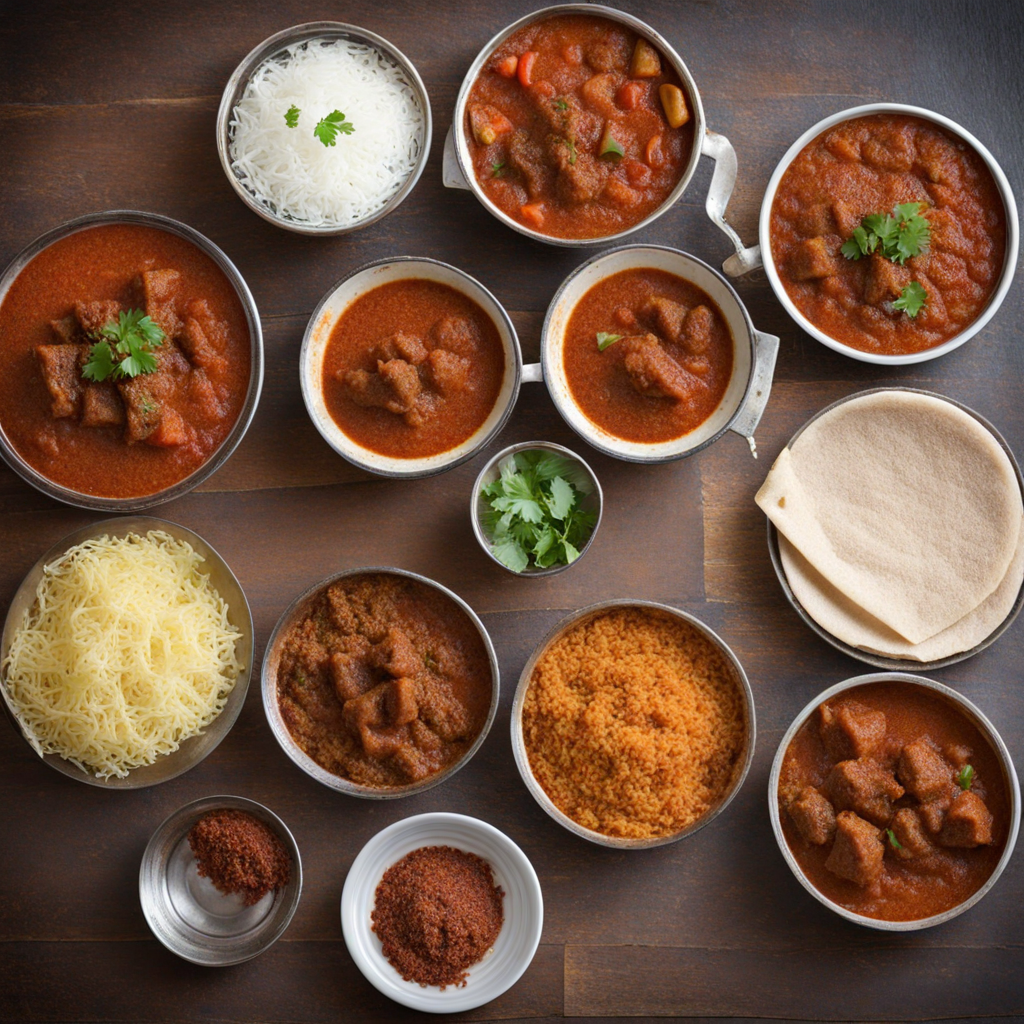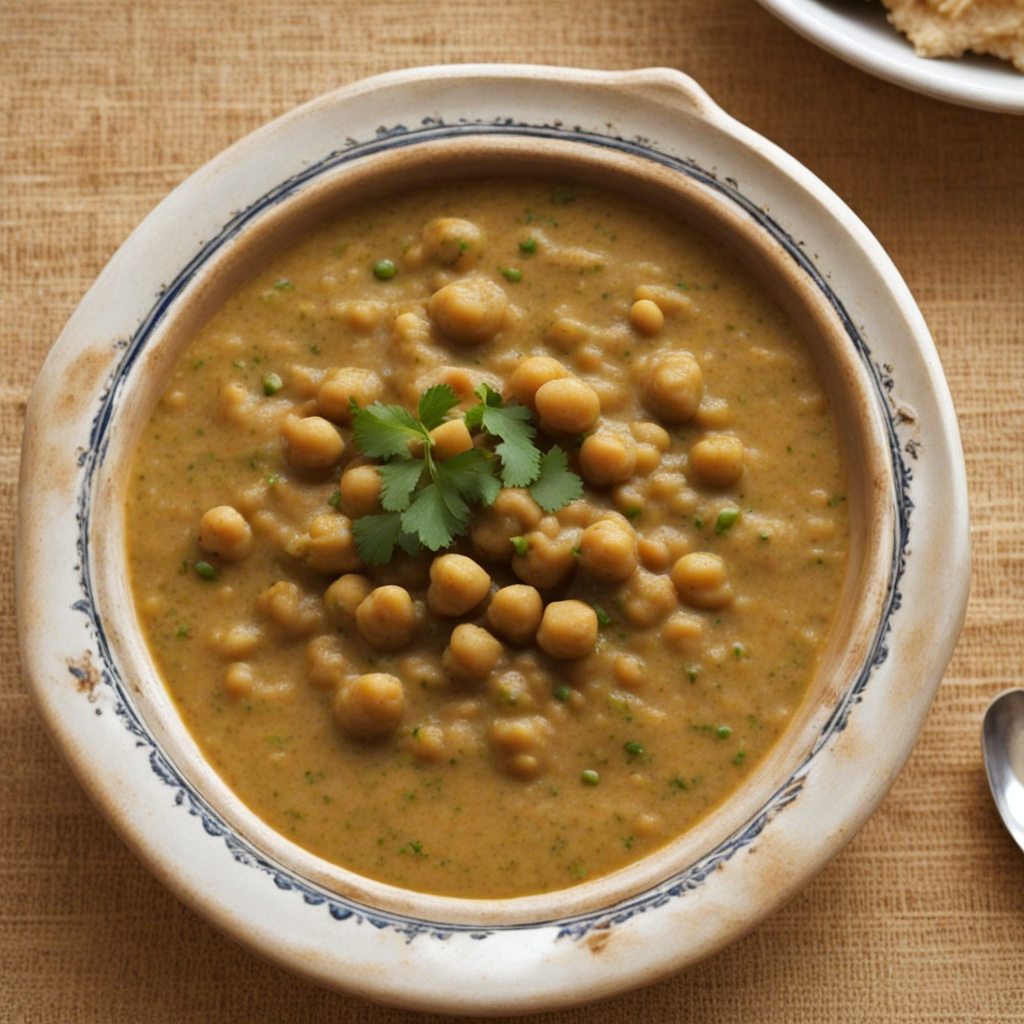Hamli
Hamli is a delightful Eritrean dish that showcases the rich and vibrant flavors of the region. It is a stew primarily made from a variety of leafy greens, often including collard greens or Swiss chard, which are sautéed to create a tender and flavorful base. The dish is further enhanced with spices such as cumin, coriander, and a hint of garlic, which together create a warm and aromatic experience that tantalizes the taste buds. The use of fresh ingredients and traditional spices makes Hamli a wholesome option that embodies the essence of Eritrean cuisine. In addition to the greens, Hamli may incorporate other vegetables like carrots and potatoes, adding a delightful texture and depth to the stew. Some variations might even include a protein source, such as lentils or chickpeas, making it a hearty dish that is both nutritious and satisfying. The combination of earthy vegetables and spices results in a dish that is both comforting and invigorating, making it perfect for sharing with family and friends. Hamli is typically served with injera, a traditional sourdough flatbread that acts as a perfect accompaniment. The injera not only complements the flavors of the Hamli but also serves as a utensil to scoop up the stew, creating an interactive dining experience. The tangy flavor of the injera balances the richness of the Hamli, resulting in a harmonious blend of tastes that reflects the unique culinary heritage of Eritrea. Exploring Hamli is a delightful journey into the heart of Eritrean gastronomy, inviting food lovers to discover new and exciting flavors.
How It Became This Dish
The History and Cultural Significance of ሓምሊ (Hamli) from Eritrea #### Origins of Hamli Hamli, a traditional dish from Eritrea, holds a special place in the culinary landscape of the Horn of Africa. Its roots extend deep into the region's history, reflecting the rich tapestry of cultural influences that have shaped Eritrean cuisine over centuries. The dish is primarily composed of a mix of vegetables and legumes, often spiced with herbs and served alongside staple foods like injera, a sourdough flatbread made from teff flour. The origins of Hamli can be traced back to the agrarian societies that have inhabited the region for millennia. Eritrea's diverse climate and geography allowed for the cultivation of a variety of crops, including lentils, chickpeas, and leafy greens. The integration of these ingredients into a single dish exemplifies the resourcefulness of Eritrean cooks, who have historically made the most of local produce. The name "Hamli" itself is derived from the Tigrinya word for "to mix" or "to combine," and this etymology highlights the dish's essence as a harmonious blend of flavors and textures. The dish's base typically consists of finely chopped greens such as kale or Swiss chard, mixed with a medley of spices like cumin, coriander, and garlic, creating a vibrant and nutrient-rich meal. #### Cultural Significance In Eritrean culture, food is not just sustenance; it is a medium for social connection and cultural expression. Hamli is often prepared for communal gatherings, celebrations, and significant life events such as weddings and religious festivals. The act of sharing a meal is deeply ingrained in Eritrean customs, and Hamli often serves as a centerpiece in these gatherings, symbolizing unity and hospitality. Moreover, Hamli is revered for its nutritional value, particularly within the context of Eritrea's historical struggles. The country has faced various challenges, including colonialism, war, and economic hardship. During times of scarcity, dishes like Hamli have provided a way for families to stretch available ingredients, ensuring that all members are fed. This practicality has elevated the dish to a status beyond mere food; it embodies resilience and ingenuity. Hamli also plays a role in the traditional Eritrean diet, which is predominantly plant-based. As a country with a significant vegetarian population, due in part to religious practices among the Eritrean Orthodox Christians and Muslims, Hamli serves as a vital source of protein and vitamins. It showcases the Eritrean philosophy of utilizing what is available in the environment, making it a model of sustainable cooking. #### Development Over Time As Eritrea has evolved, so too has the dish of Hamli. The influences of various cultures and historical events have shaped its preparation and presentation. The Italian occupation of Eritrea from the late 19th century until World War II introduced new culinary techniques and ingredients, such as tomato and olive oil, which have been incorporated into modern iterations of Hamli. This fusion reflects the adaptive nature of Eritrean cuisine, which has been influenced by neighboring regions and foreign powers while maintaining its core elements. In contemporary times, the globalization of food culture has further transformed the perception and preparation of Hamli. Eritrean diaspora communities around the world have embraced their culinary heritage, introducing Hamli to a broader audience. This exposure has led to variations of the dish that cater to diverse tastes while preserving its fundamental characteristics. In restaurants and homes alike, Hamli is now often served with a variety of accompaniments, from spicy sauces to grilled meats, allowing for a fusion of traditional and modern dining experiences. The rise of social media and food blogging has also played a crucial role in popularizing Hamli outside Eritrea. Recipes and cooking videos showcasing the dish have gone viral, allowing Eritreans to share their culinary traditions with the world. This digital platform has not only celebrated Hamli but has also sparked interest in the broader context of Eritrean cuisine, encouraging a revival of traditional cooking methods and ingredients. #### Hamli in Modern Eritrean Life Today, Hamli remains a beloved dish in Eritrea, cherished for both its taste and its symbolic significance. It is commonly found in households across the country, from the bustling cities of Asmara to rural villages. Many Eritrean women take pride in their unique Hamli recipes, often passed down through generations, each adding their personal touch to this classic dish. Furthermore, Hamli has found its place in Eritrean restaurants around the globe, serving as an ambassador of Eritrean culture. These establishments often create a welcoming atmosphere where patrons can experience not only the food but also the rich history and traditions of Eritrea. Dining on Hamli becomes an immersive experience, as it is typically served on a shared platter, encouraging communal eating and conversation. In recent years, there has been a growing interest in plant-based diets worldwide, and Hamli's nutritious profile positions it perfectly within this trend. The dish's emphasis on fresh vegetables and legumes aligns with the increasing demand for healthy, sustainable food options. As more people seek to explore international cuisines, Hamli stands out as a delicious and wholesome choice. #### Conclusion The history of Hamli is a testament to the resilience and creativity of the Eritrean people. From its humble origins as a practical dish for agrarian societies to its role as a symbol of unity and cultural pride, Hamli encapsulates the spirit of Eritrean cuisine. As the world continues to connect through food, Hamli serves as a delicious reminder of the importance of cultural heritage, community, and the power of sharing a meal. Its evolution over time reflects not only changes in Eritrean society but also the universal language of food that brings people together, transcending borders and generations.
You may like
Discover local flavors from Eritrea


